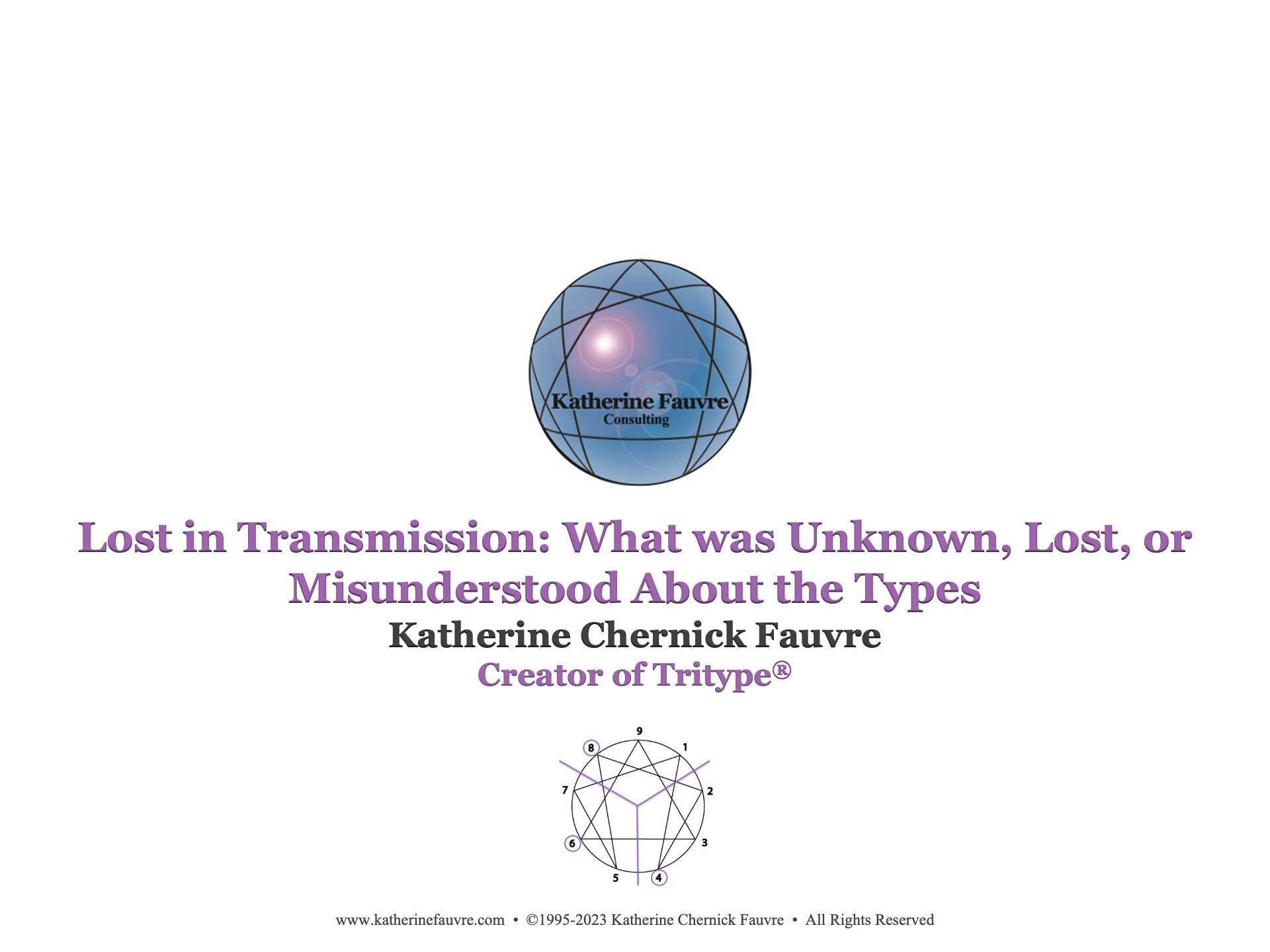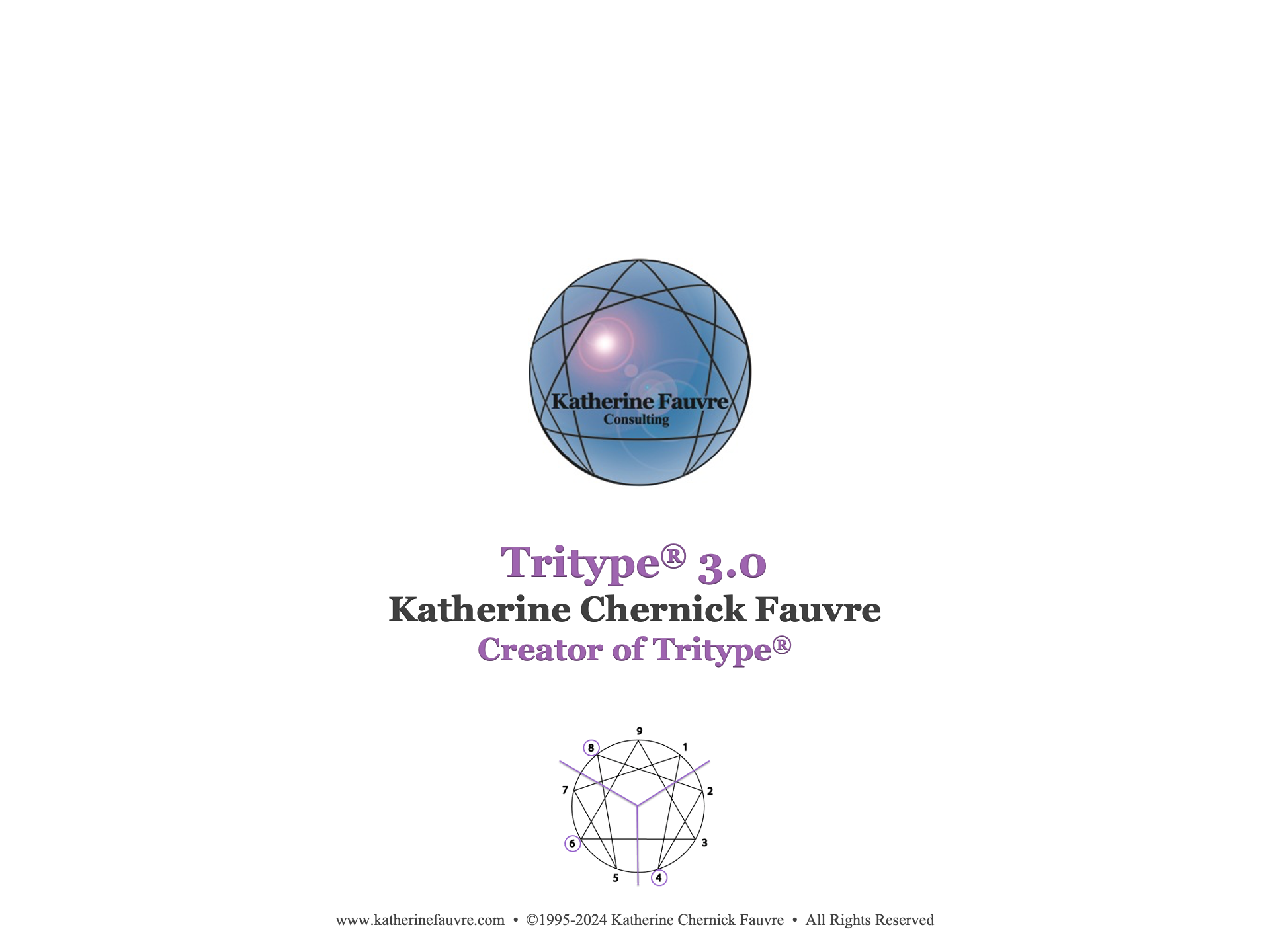Lost in Transmission: Discover What was Unknown, Lost, or Misunderstood About the Types - 3-Week Masterclass
Lost in Transmission: Discover What was Unknown, Lost, or Misunderstood About the Types - 3-Week Masterclass
Expand your understanding of the Enneagram Types...
• Clear up common mistypings.
• Learn what you didn’t initially learn about types.
• Discover what was inadvertently lost…
• Unknown, or misunderstood in the transmissions of the Enneagram.
Learn more about The 4 Transmissions of the Enneagram:
• Discover what was lost along the way.
• Have you ever wondered why types 2, 6, and 9 have such narrow personality styles?
• Learn about the confusion between types 2 and 7, types 6 and 4, types 1 and 5.
• How the sp 3 can seem 8ish whereas the sx 3s can seem 7ish, and how that came about.
• Or why the social 2 is mistyped as a 3...
• Learn why some types have fewer archetypes; what went missing, and why...
• Expand your knowledge of the types.
• Learn what you didn't know that was lost in transmission
Have you noticed gaps in the teachings of the Enneagram? Types that seem less diverse than others with fewer Archetypes? Well, you are right! As with any transmission of material, aspects can be unknown, lost or misunderstood and thus vary from other teachings.
• Why is the magical sx3 taught as a sx7?
• What happened to the Wild Child type sx2?
• Why does the sx5 long for love they do not feel worthy of?
• Why is the intellectual 9 taught as a type 4 without envy?
• Why is the sensitive and creative sx 6 taught as a type sx3?
The Enneagram of Personality, as we know it today, began in Arica, Chile, in 1970. It has grown and expanded in many diverse ways.
Due to Katherine attending intensives with Ichazo, Naranjo, Riso, Hudson, Palmer, Daniels, Hurley, Dobson, and others, she could see what was lost in the transmissions of the Enneagram. She saw key archetypes of the Types critical to accurately understanding the Types. Losing information in the transmission of the Enneagram has unfortunately led to some mistypings.
What are the key distinctions and archetypes of the types that were unknowingly or inadvertently lost along the way?
Oscar Ichazo’s Enneagram of Personality, as we know it today, originated in Arica, Chile, between 1968 and 1970. It was first taught on July 1, 1970, and has evolved and expanded in various ways.
As an avid student and teacher of personality typologies, Katherine studied with everyone, including attending intensives with Oscar Ichazo and Claudio Naranjo. She certified with Palmer-Daniels, Riso-Hudson, and Hurley-Dobson, and attended workshops with Condon, Jackson-Bear, and Wolinsky. She has also conducted 24 qualitative research studies on the “internal experience” of the Enneagram Types, Tritypes®, and Instincts, interviewing over a hundred thousand participants, expanding her understanding of the Enneagram types and contributing to a diverse and holistic view of the types.
Discover what was inadvertently lost, Unknown, or misunderstood in the transmissions of the Enneagram.
With each Enneagram workshop, intensive, and certification program, Katherine learned more and more exciting details about the inner world and inherent nature of the types and how each Enneagram Type wants to be nurtured and understood at a fundamental level.
The distinct contributions made by the Enneagram teachers have shaped our view of the types. Each transmission added key nuances to the Enneagram, with the whole of the Enneagram being far greater than the sum of its parts.
In this 3-week video recording, Katherine shares simple facts about the history and evolution of the Enneagram Types, Subtypes, Stackings, and Tritypes® that will enhance your definitions of the types and pave the way to seeing new dimensions within types.
Understanding and restoring the details and explanations missed in the transmissions of the Enneagram types can clear up simple misunderstandings and misattributions as well as enhance what you already know. Learning what was lost and found along the way keeps the study of types alive and exciting, adding new dimensions that were inadvertently lost between transmissions.
Restoring aspects of the types are easy to integrate because they make sense.






